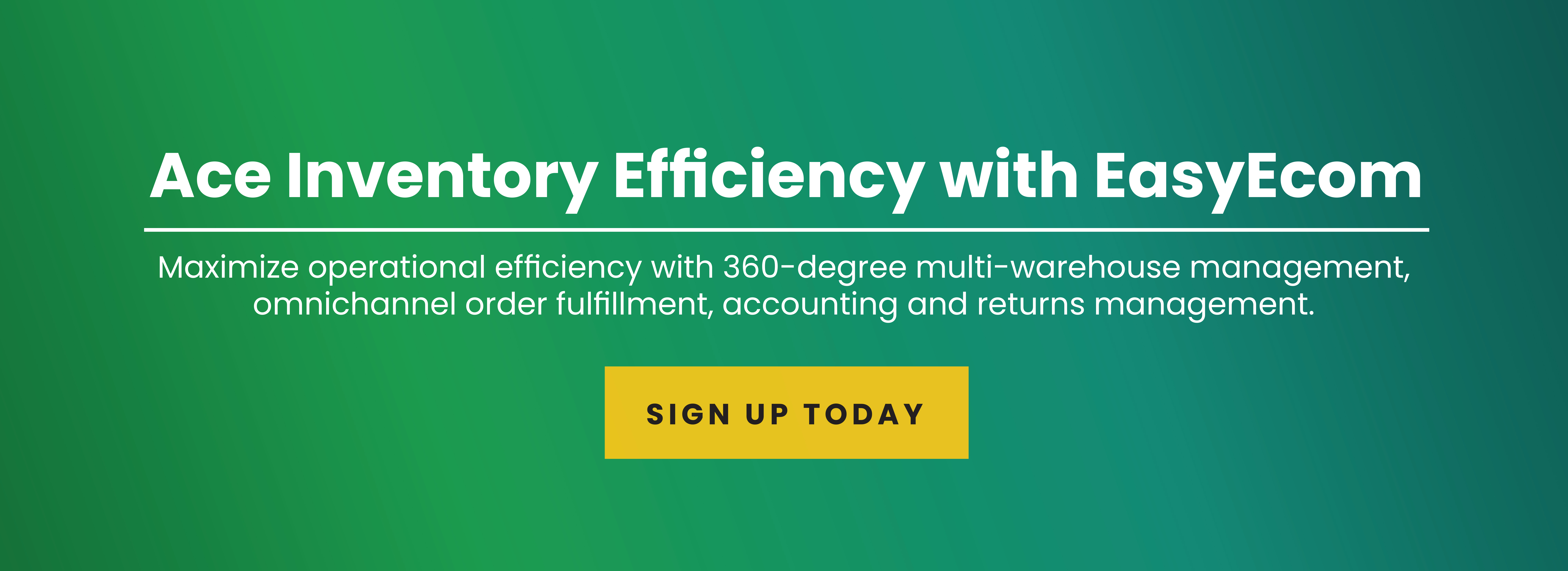Customers are anticipating shopping this Festive Season despite worries about inflation and discretionary spending. According to a recent survey by consulting firm Redseer, 83% of the respondents said they planned to buy during the Festive sales. Consumers are not the only ones who are upbeat; vendors also anticipate better sales growth.
During the holidays, the challenge is considerably more difficult. Retailers frequently struggle to keep up with erratic demand. Inventory management is the top concern for more than half of small businesses over the Festive Sales. And it's understandable why: inventory mismanagement results in expensive stock-outs and overages.
It is time for all businesses to strategize, build their supply chain, and plan effectively. Technology can be a vital part of preparing for the holiday season. Every retailer should stay informed of the latest seasonal inventory trends this holiday season to expand their business!
Emerging Festive Season Trends for Seasonal Inventory
Using Cloud for Hybrid Work
Cloud computing enhances Inventory management efficiency. As servers are managed by a third party, businesses have fewer IT issues to keep an eye on. Inventory levels, purchases, and other information will also be synchronized between the supply chain, warehouse, and marketplaces.
The use of cloud computing for inventory management has been rising rapidly as the use of the technology has sped up with the rise of hybrid work environments.
Use of AI & ML
As computer programs gain a deeper understanding of a particular company's inventory management system, artificial intelligence and machine learning offer continuous development. These programs can better integrate inventory levels and movement across intricate networks and can spot flaws that lead to higher expenses. For example, AI/ML may reveal that the packing of a certain product leads to above-average shipping damage rates.
Predicting Inventory with the help of Data Analysis
Once sufficient data has been collected and analyzed, it can be used to increase warehouse picking rates. Analysis can reveal products that are typically bought together or by clients who exhibit particular behaviors.
Products that are frequently mixed can be arranged close together, saving pickers time as they move quickly between aisles. In some cases, it is even possible to pick orders as they are being placed. This not only increases picking productivity but also enables even quicker delivery timeframes.
Multiple Distribution Centers
Multiple sites are used for distributed inventory management spanning a region, a nation, or the entire world. A more globally streamlined supply chain management is made feasible by keeping supplies, and quicker delivery is made possible by storing products. Additionally, scaling, expanding, and handling crises are made simpler.
For years, Amazon has employed numerous warehouses to offer quick shipping and cut down on transportation expenses. More companies are using this strategy as they are forced to meet client expectations about delivery times.
Third-Party Logistics
It takes specific software, hardware, and warehouse layouts to make the most of particular inventory management techniques. Small and medium-sized businesses may not all have the funds to buy these.
A third-party logistics provider outsourcing to SMBs avoids the need for expensive capital expenditures. A 3PL expert will have the required tools and will charge a recurring fee that is easier to handle on limited budgets.
Smart Inventory Forecasting
Businesses gain information that allows them to make better purchasing decisions as AI and data analytics deliver deeper insights into sourcing and sales. Smart inventory forecasting will increase inventory levels since firms will be able to forecast how much inventory they will require due to changing conditions.
Personalized inventory management
Personalization is the apex of efficient inventory forecasting. Customers are offered product recommendations based on their prior purchasing patterns through personalization, and things are occasionally pre-ordered based on anticipated future shopping patterns.
Customer Service using Omnichannel for Improved Communication
Customers want to know the status of their orders, and any difficulties that may create delays should be addressed as soon as possible. They are guaranteed to receive the most recent information through omnichannel customer care.
Beyond connecting with consumers via the channels they want, omnichannel customer care goes further. Customers can access data on the supply chain, warehouses, and distribution, making them fully informed.
Although Seasonal Inventory boosts demand, it may be a stressful time for sellers, particularly those who are new to the market. During the busy holiday season, warehouse management and fulfilment must be executed with precision. The efficiency of the firm as a whole will be improved by anticipating demand, partnering with courier services or third-party fulfilment platforms, and controlling inventories. Combining appropriate techniques and leveraging the appropriate partners, technology, and strategies is the key to increasing holiday season sales.

.png)



.png)








